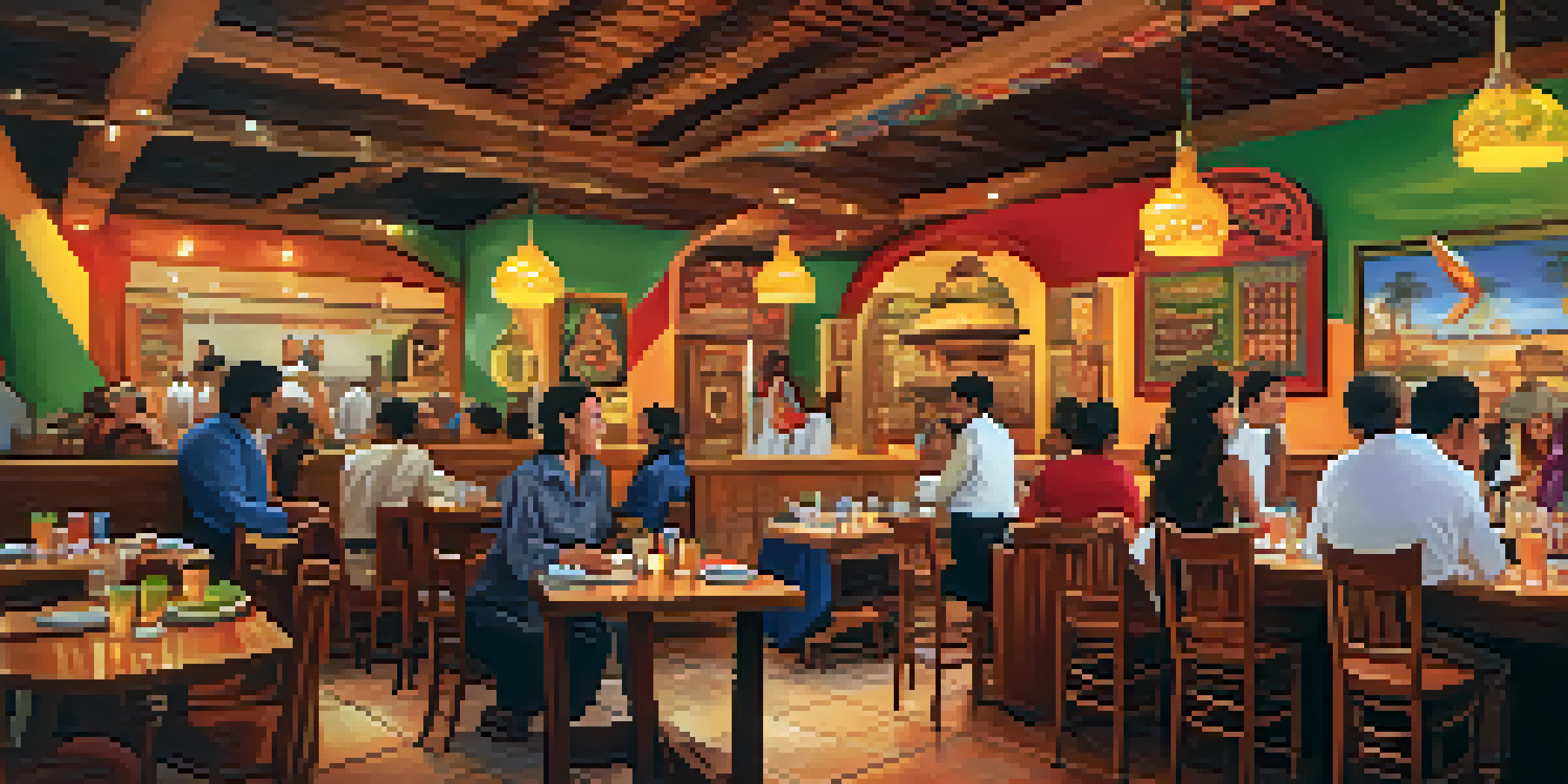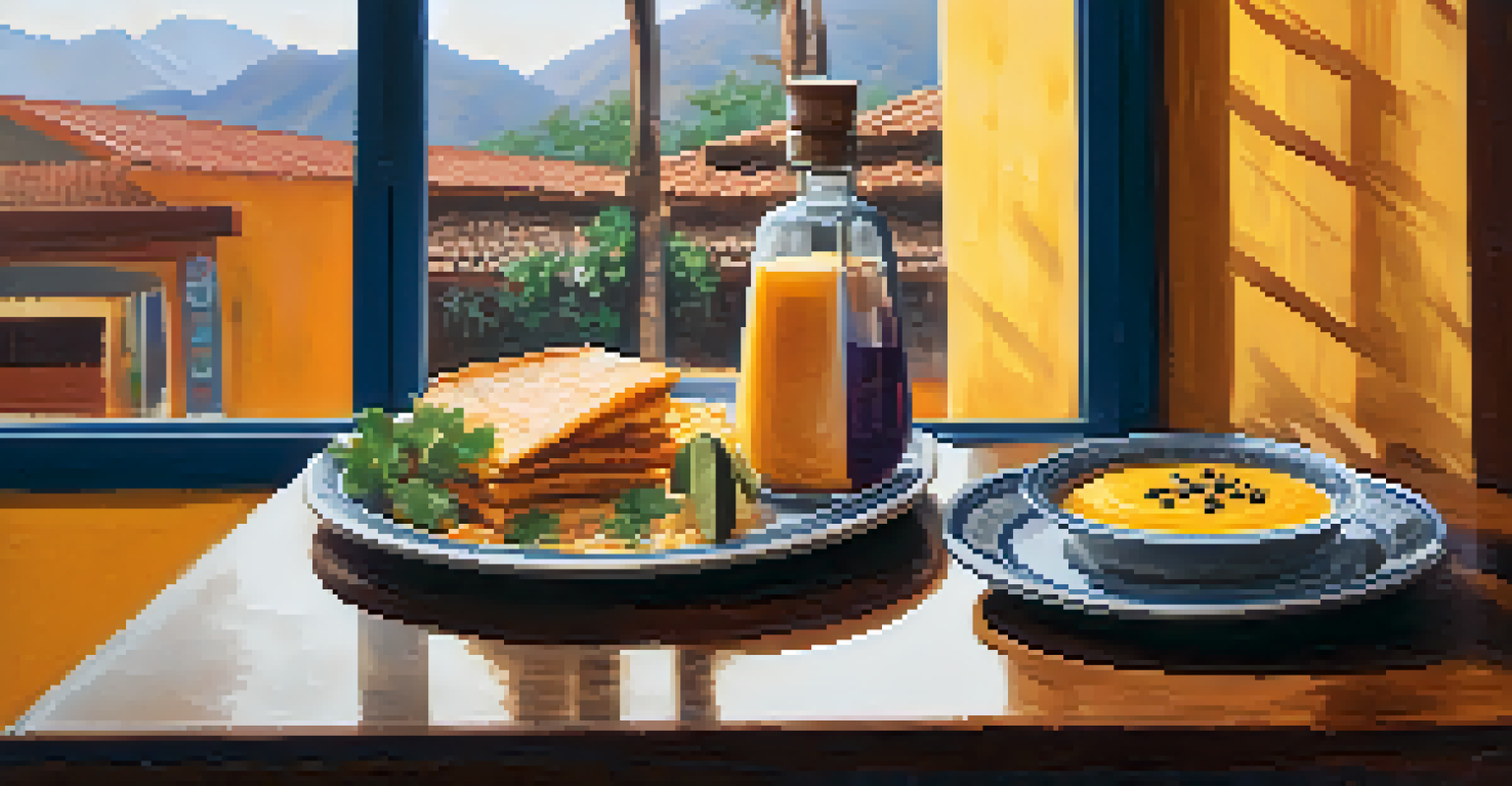Essential Vocabulary for Ordering Food in Peru

Basic Greetings and Introductions in Peru
When you first enter a restaurant in Peru, a friendly greeting goes a long way. Saying 'Hola' (Hello) or 'Buenas tardes' (Good afternoon) can set a warm tone for your meal. You might even want to introduce yourself with 'Soy [Your Name]' (I am [Your Name]), making you feel more connected to the locals.
The greatest gift of life is friendship, and I have received it.
Peruvians appreciate politeness, so don’t forget to use 'Por favor' (Please) when making requests. A simple 'Gracias' (Thank you) after your meal can show gratitude and leave a positive impression on the staff. Remember, a smile and respectful demeanor can enhance your dining experience significantly.
By starting with these basic greetings, you open the door to a more enjoyable interaction with the restaurant staff. This approach not only helps you practice your Spanish but also fosters a friendly atmosphere, making your dining experience in Peru memorable.
Key Vocabulary for Ordering Food
When it comes time to order, knowing some essential vocabulary is crucial. Words like 'menú' (menu) and 'plato' (dish) will help you navigate the options available to you. You can ask, '¿Qué me recomienda?' (What do you recommend?) to get suggestions from the waiter.

Don’t hesitate to use numbers when ordering, as they refer to specific dishes on the menu. For example, you might say, 'Quisiera el plato número tres' (I would like dish number three). This clarity not only makes ordering easier but also reduces the chances of misunderstandings.
Basic Greetings Enhance Dining
Using simple greetings and polite phrases can create a warm atmosphere when dining in Peru.
Lastly, using phrases like 'Sin picante' (without spice) or 'Con guarnición' (with side) ensures your meal is tailored to your taste. This vocabulary empowers you to express your preferences, making your dining experience more enjoyable.
Understanding the Menu: Common Peruvian Dishes
As you explore the menu, being familiar with popular Peruvian dishes can enhance your culinary adventure. Dishes like 'ceviche' (marinated fish) and 'lomo saltado' (stir-fried beef) are must-tries. Knowing these terms allows you to engage more deeply in conversations about food.
Food is symbolic of love when words are inadequate.
You might also encounter regional specialties like 'aji de gallina' (chicken in aji sauce) or 'pachamanca' (earth-cooked meats). Asking the waiter about these dishes can lead to delightful recommendations and perhaps even a story behind the dish, enriching your experience.
Furthermore, understanding the ingredients and preparation methods can make your meal more enjoyable. If you're unsure about a dish, don't hesitate to ask for a brief description. Locals love to share their culinary traditions, making it a great way to connect with Peruvian culture.
Asking About Ingredients and Allergies
When ordering, it’s important to inquire about ingredients, especially if you have dietary restrictions. Phrases like '¿Qué ingredientes tiene?' (What ingredients does it have?) can help clarify what you're about to eat. This is particularly useful with dishes that may contain allergens.
If you have allergies, you can say, 'Soy alérgico/a a...' (I am allergic to...). For example, 'Soy alérgico/a a los mariscos' (I am allergic to seafood) ensures that the staff takes your health seriously. It’s always better to be safe than sorry when it comes to food.
Know Your Food Vocabulary
Familiarity with essential food vocabulary and common dishes helps you navigate menus and connect with locals.
Being proactive about your dietary needs not only ensures your safety but also shows respect for the chef's work. This clear communication can lead to a more tailored meal that suits your palate.
Requesting Drinks: Beverages in Peru
Asking for drinks is another essential part of ordering food in Peru. Common beverages include 'agua' (water), 'cerveza' (beer), and 'chicha morada' (purple corn drink). You might say, '¿Me puede traer una cerveza, por favor?' (Can you bring me a beer, please?).
Don’t forget to ask if drinks are included with your meal, as some restaurants may charge separately. A simple '¿Está incluido?' (Is it included?) can save you from unexpected costs. Understanding drink options can enhance your dining experience.
Lastly, trying traditional beverages like 'pisco sour' can add a unique twist to your meal. Asking the waiter about their recommendations for drinks can lead to delightful new tastes that you might not have considered.
Paying the Bill: Essential Phrases
Once you’ve enjoyed your meal, knowing how to ask for the bill is essential. You can say, 'La cuenta, por favor' (The bill, please) to signal that you’re ready to pay. This phrase is straightforward and will be well understood by the staff.
If you want to know more about the total, you might add, '¿Cuánto es?' (How much is it?). This helps you understand what you’re paying for and ensures transparency in your dining experience.
Cultural Etiquette Matters
Understanding dining etiquette, such as waiting for everyone to start eating, enriches your overall experience in Peru.
Remember, tipping is customary in Peru, so don’t forget to express your appreciation. A tip of around 10% is standard in restaurants, and saying 'Gracias' as you leave can leave a lasting positive impression.
Cultural Etiquette When Dining Out
Understanding cultural etiquette can enhance your dining experience in Peru. For instance, it's polite to wait for everyone at the table before starting to eat. Saying 'Buen provecho' (Enjoy your meal) before digging in shows respect and camaraderie.
Additionally, engaging in small talk with the staff or fellow diners can create a warm atmosphere. Asking about local recommendations or sharing your experiences can foster connections and enrich your visit.

Lastly, be mindful of meal times, as they can differ from your home country. Lunch is often the main meal of the day, so be prepared for a longer dining experience, which can be a delightful way to immerse yourself in local culture.